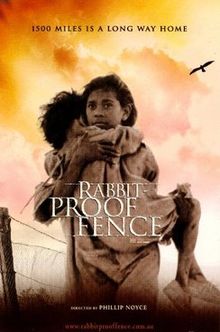
A phone rings in the middle of the night, and a movie is born. Such is the case when someone with an exceptional idea connects with the guiding hand of a veteran development expert.
Meet Kathleen McLaughlin, a producer and development executive with over 15 years of experience in both studio and independent feature projects. She helped Director Philip Noyce shepherd a midnight pitch into the Golden Globe-nominated film RABBITPROOF FENCE, she Co-Produced The Quiet American, and she developed The Saint, The Bone Collector and The Sum of All Fears. She has worked with some of the top names in the business including Sydney Pollack, Anthony Minghella, Kurt Wimmer, Christopher Hampton, and she recently served as a creative consultant on SALT starring Angelina Jolie. She is now a member of the Voyage Development Team.
“You just never know” McLaughlin muses, “The most interesting stories can come from the oddest places.”
Throughout her career she has honored this belief to help some of the world’s leading directors bring their visions to life. Whether she’s working on a large tent-pole franchise or a small indie, she focuses her attention on what she considers the three most vital aspects of screen story:
1.) Character Development – “Likeability can be a complex notion. It’s much more fluid than many people think. Heroes, if they’re just “heroic,” are not interesting.It’s the quirks and flaws that make them relatable and interesting.A classic example of this is Indiana Jones’s hatred of snakes.In a roomful of them, he’s uncharacteristically terrified-and we love it. Characters also need to have some sort of dilemma that stems not just from plot but from the qualities that define them as a person.”
2.) Plot – “Events need to create conflicts that produce consequences that change or advance the story. I’ve seen many screenwriters make the mistake of including lots of scenes that just give information, where events don’t happen, or where things don’t happen as a consequence of an event earlier in your story. There needs to be cause and effect to keep a story from being episodic.”
3.) Emotion— “This is the thing that ties character and story together. It’s not just about what the characters feel, it’s about what you want the audience to feel about the characters and events of the story. In THE BONE COLLECTOR you’ve got a detective putting clues together to solve a murder, but the emotion of the story is about him realizing that there’s more to him than just his skill at solving crimes. He discovers his need to connect with other people to fully experience life.”
As easy as this methodology sounds, successful application can be difficult for even the most seasoned filmmaker, which is exactly why her expertise is so in-demand. When asked how she earned Noyce’s trust she states simply that she’s good at “finding the emotional journey, finding those character benchmarks that will strengthen the script and create a pitch that will work in a room.”
In addition to script development, McLaughlan has creatively shepherded films through the entire production process. “I’ve had a lot of experience watching a movie go from the very early stages of development, all the way through to the release of a picture.” She knows the challenges of financing, casting, shooting, editing and marketing on a global scale, and her experience has given her a thorough perspective on how top studios and production companies operate. Given the hectic schedule of most directors and screenwriters, this experience has proven invaluable. “You have to understand the strengths of the director you’re working with and figure out how what you’re doing can compliment what they are.”
Identifying and refining directorial talent, particularly that which has not yet made it onto Hollywood’s radar screen, is among the great pleasures of her job. “There’s nothing more exciting for a producer than to meet somebody who’s got a fresh perspective, and a creative eye.” She urges emerging filmmakers to keep experimenting, writing and finding new ways to captivate audiences. Not only is this the surest way to get recognized by the industry, but also the perfect avenue for enticing acting talent. Actors, she feels, are constantly looking for those “real emotional turning points” no matter what the style. They all want a challenge they haven’t seen before, and if a concept can hook them, that’s half the battle.
Fine-tuning the emotional impact of a screenplay, making a scene more cinematic or compressing narrative information–these are some of the crucial nuances McLaughlin has mastered and imparted over the years. Call it learning the math of a story; everything has to add up. Yet, McLaughlin confides that the secret to success is often simpler than many realize. Creativity, combined with a passionate love for movies, she stresses, frequently trump networks of connections and endless amounts of financing. “If you can be a good audience member, you’re going to be a good director because you’re going to be thinking not about the art or impressing people. You’re thinking about telling a story that’s going to entertain you the way you like to be entertained.” And if your phone rings in the middle of the night with a writer or director who has a burning idea for a great story, have them call Kathleen in the morning.
Voyage Writer Thomas Cartier offered his talents to The Starbird once again to profile Kathleen McLaughlin, who could make you the next Phil Noyce.
Here’s a Link to Tom’s Work : CLICK HERE

Very informative post. Thanks for taking the time to share your view with us.
Panasonic Camera Reviews
Your story was rlealy informative, thanks!
Super informavtie writing; keep it up.